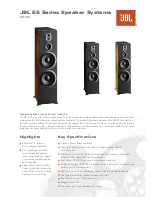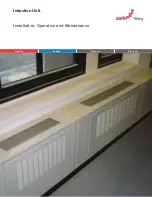
1. Safety Precautions
WMD078TE0PAA07
7
(2) When welding or monitoring welding operation,
wear protective clothing designed for welding,
such as leather gloves, leg covers and a leather
apron, and also wear long-sleeve shirts.
(3) Install a protective curtain around the welding
operation site to prevent exposure of eyes of
people in the surrounding area to the arc flash.
(4) Be sure to wear noise-proof protective
equipment, such as ear muffs and ear plugs, if
the noise level is high.
Gas Cylinder and Gas Flow Regulator
(1) The gas cylinder must be handled properly
according to applicable laws and in-house
standards.
(2) Use the gas flow regulator that is supplied or
recommended by our company.
(3) Read and observe the precautions described in
the operating instructions of the gas regulator
prior to use.
(4) Secure the gas cylinder to a dedicated gas
cylinder stand.
(5) Do not expose the gas cylinder to high
temperature.
(6) When opening the valve of the gas cylinder, do
not bring your face close to the discharge
outlet.
(7) When the gas cylinder is not in use, be sure to
put the protective cap back on.
(8) Do not hang the welding torch on the gas
cylinder. Do not allow the electrode to touch to
the gas cylinder.
(9) Only the specified contractor should perform
disassembly or repair work on the gas flow
regulator. Such work requires some expertise.
Rotating Parts
(1) Never bring your hands, finger, hair or clothes
near the rotating cooling fan and feed rollers.
They could get caught in moving part, causing
injury.
(2) Do not use the product when the case and panel
are removed or not in place.
(3) Only trained and/or skilled personnel who
properly understand welding machines should
perform maintenance and repair work. During
maintenance or repair work, provide a fence or
similar form of protection around the welding
machine to prevent unauthorized individuals
from accidentally coming close to the area.
Welding Wire
(1)
Do not perform inching operation or press the
torch switch with your eyes, face or body close
to the end of the welding torch. Wire extends
out from the end of the welding torch and may
stick into the eye, face or body.
(2) When using a torch cable with the resin liner,
straighten the torch cable and reduce the preset
feed amount (current) to half or less before
applying the wire inching.
(3) If the high speed wire inching is executed with
the torch cable extremely-bent, the welding
wire may pass through the resin liner and the
cable. Replace any damaged liner/cable with a
new one without fail. Never use a damaged
liner/cable, or it can cause gas leak or insulation
deterioration.
Insulation Deterioration Prevention
(1) Keep enough distance from welding power
source when performing welding or grinding
operation to prevent spatter or iron particles
from getting into the welding power source.
(2) Perform periodic inspection and maintenance
work to prevent insulation deterioration due to
accumulated dust or dirt.
(3) When spatter or iron particles get into the
welding power unit, turn it and power
distribution box off, and then perform the air
blow process.
(4) Replace any damaged liner or cables as they
can cause gas leakage and insulation deterio-
ration.
(5) To prevent accumulation of dust and dirt
inside the welding power source, do not use
product with a case and panel either removed
or not in place.
Overturn of gas cylinder or blowout
of gas flow regulator can cause
injury.
Rotating parts can cause injury.
Welding wire, especially wire tip part,
extending out from the end of
welding torch can cause injury by
sticking into the eye, face or body.
Insulation deterioration of welding
power source can cause fire.








































